Xiaomi Mi Note 10 camera review: the image sensor of tomorrow
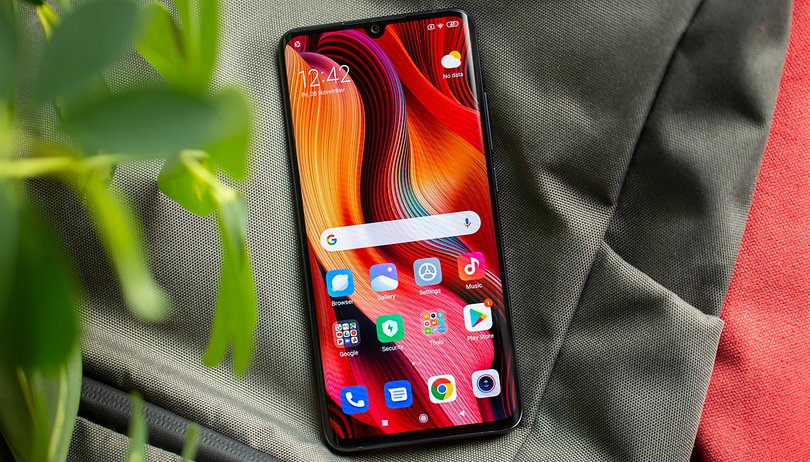

Tomorrow's image sensor in today's smartphone with yesterday's software. The camera setup around the extraordinarily large 108-megapixel sensor does have some very promising features. But in practice, the mid-range smartphone is constantly overwhelmed by the possibilities and suffers from an unclear camera concept.
In times of smartphone photos printed to hang on the walls of a house, the constant promise of mobile phones resonates: "You don't need a full-grown camera anymore." That's exactly what I tried with the Xiaomi Mi Note 10 - and left my familiar DSLR at home on a two-week trip through Indonesia.
The main reason for this decision was the main camera in the Mi Note 10. At 1/1.3 inches, the 108-megapixel image sensor is the third-largest ever installed in a smartphone - after the legendary Nokia 808 PureView and the tube-cropped Panasonic CM1. My enthusiasm for the Samsung Isocell HMX Bright has already been written about.
Here you will find a selection of original test photos taken with the Xiaomi Mi Note 10. In addition, of course, at the bottom of the test report a lot of photos are included with comments, enlargements, and hints.
Overall photo quality
The sensor stands out from the Mi Note 10, which is otherwise anchored in the mid-range segment, in such a way - one might almost regard the device as a public beta for Samsung's new flagship sensor. According to recent rumors, the Korean company will also use the sensor with the model number S5KHMX in the new Galaxy S11. The leap from the 12 megapixels of the past years to 108 megapixels now needs to be carefully considered and tested in advance.
The main sensor
The photos from the main sensor almost always inspire. The fully automatic system produces mostly excellent 27-megapixel photos from the 108 megapixels in the best Quad-Bayer manner. The neutral color rendering in daylight, which brings very vivid and natural colors to the pictures, is very pleasing. For high-contrast subjects, HDR mode does a good job, preserving detail in both very bright and dark areas of the image.
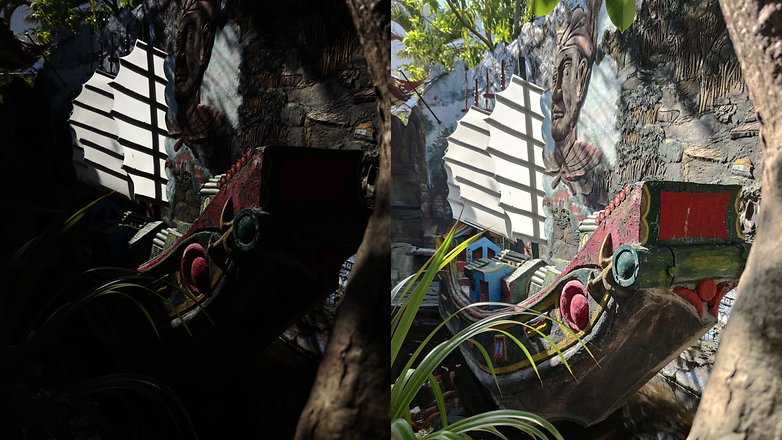
However, I had to struggle again and again with the HDR mode during my test. With the Auto setting, I couldn't be sure that the high contrast mode was actually firing. Accordingly, on the second day of the trip I simply set the checkmark at HDR to "on" and mostly left it that way. Most of the time it was a good decision, if the Mi Note 10 would not have had to fight with ghost pictures in daylight in rare cases.

Unfortunately, these ghost images did not only appear in strongly moving scenes, but also in transitions with extreme differences in brightness.
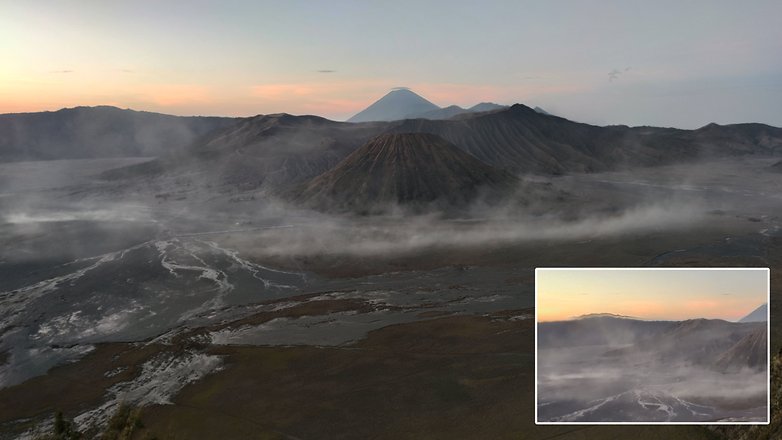
In order to correct a possibly crooked impression, I actually recounted: artifacts triggered by (presumably) the HDR mode are disturbingly noticeable in 25 of 1,845 photos. That's 1.4 percent. Even if that is still a low number it still causes a bad mood.
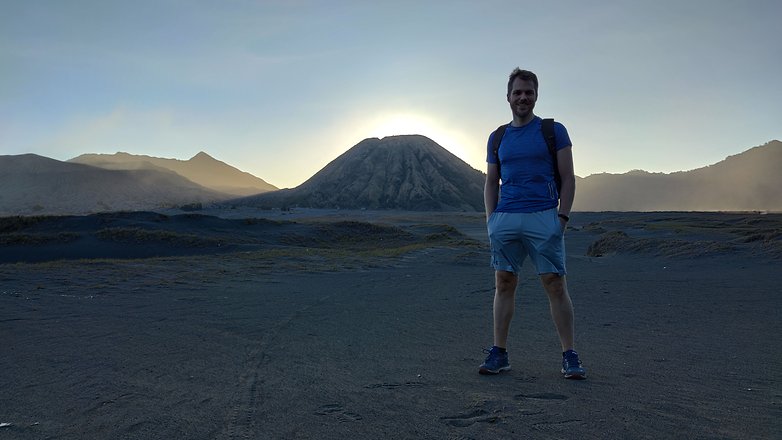
Finally, at night, the large image sensor plays out its performance to the full. With the dedicated night mode, sharp and pleasantly clear photos are possible even in difficult lighting conditions. But you should also use this mode - the results are much better than with the fully automatic mode.

For those who really want to extend the full 108 megapixels, there is a separate '108MP' mode. Especially in good lighting conditions, the detail rendition is truly breathtaking. It is really a pleasure to zoom into the huge pictures, to discover subtleties and to re-cut a photo or two with unimagined freedom.

The comparatively large image sensor also has a rather unusual characteristic for smartphones: a real optical bokeh. However, the shape of the light points is not as attractive as it is known from much larger DSLR lenses. With the holes in the middle, the blurred circles remind me almost a little of a Maksutov telescope.

By the way, in Pro mode it is only possible to select either RAW or 108 megapixels - both are not possible together. In view of the expected file size in the three-digit megabyte range, this may not be so bad. Apart from that, the 27-megapixel RAW images are also full of the problems that a small sensor with an infinite number of pixels brings with it. The traditional camera workflow with RAW and Adobe Camera RAW is inferior to computational photography, i.e.: HDR, Night Mode & Co.
The Penta camera
Away from the brilliant main camera, the camera setup, unfortunately, doesn't look at all like a unified whole. Not only does the back look like a Huawei P30 Pro, into which two additional holes have been drilled without further ado. Even the technical data somehow sounds like a sensor remnant ramp.
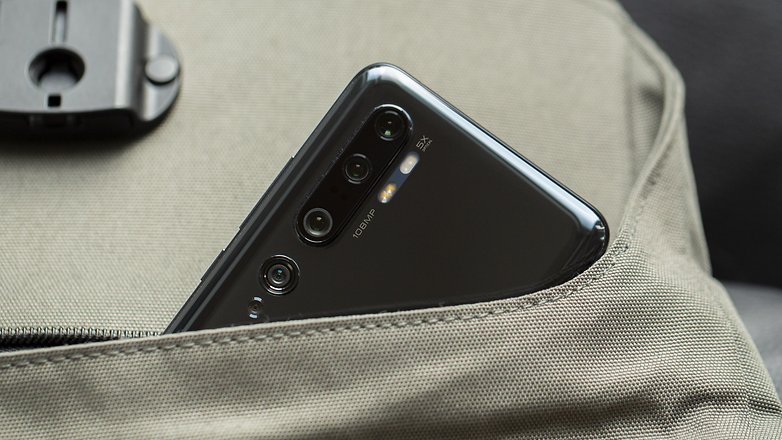
Ultrawide-angle
- Sony IMX350
- 20 megapixels, aperture F2.2
- 1.12-micron pixel pitch
- No optical image stabilizer
- 1/3-inch sensor
Main camera
- Samsung Isocell HMX Bright
- 108 megapixels, aperture F1.69
- 0.8-micron pixel pitch
- Optical image stabilizer
- 1/1.33-inch sensor
2x Telezoom
- Samsung Isocell 2L7
- 12 megapixels, aperture F2.0
- 1.4-micron pixel pitch
- No optical image stabilizer
- 1/2.6-inch sensor
3,7x Telezoom
- OmniVision OV08A10
- 8 megapixels, aperture F2.0
- 1.0-micron pixel pitch
- Optical image stabilizer
- 1/4.4-inch sensor
Macro camera
- Unknown sensor
- 2 megapixels
- 1.75-micron pixel pitch
Our colleagues of AndroidAuthority describe the Mi Note 10 quite aptly as a Swiss army knife for photographers. To stick with the analogy, one may imagine the various blades razor-sharp and partly on both sides. You can quickly miss it, especially in the dark.
2x Telezoom
Even in good lighting conditions, a drop in image quality can be seen as soon as you switch from the main camera to one of the other cameras. The 2x telephoto camera frequently used for portraits still has very good prerequisites with a 1/2.6-inch sensor size. Weaknesses are particularly noticeable in finely textured surfaces such as water or vegetation. It is particularly annoying that image parts with good detail rendition are directly connected to image parts with poor detail rendition. Furthermore, there were some problems with the posterization.
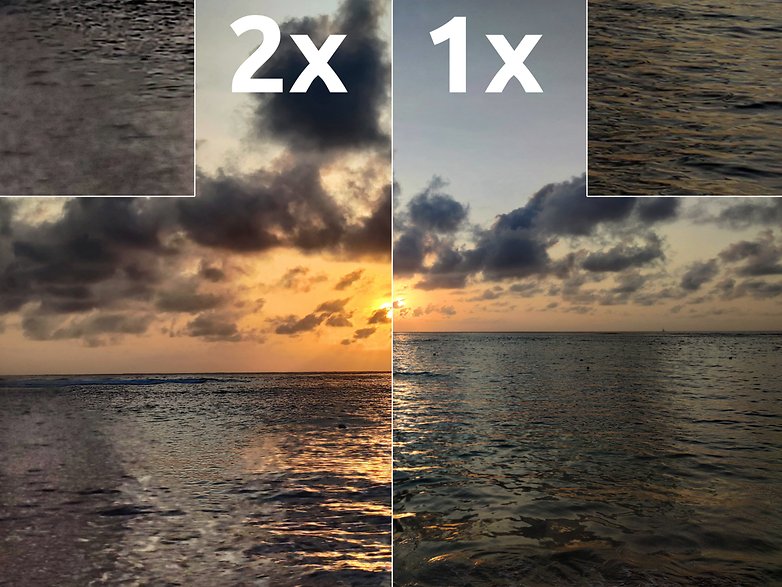
With portraits, on the other hand, the quality is usually excellent. Fine details such as eyes make the algorithms crystal clear. The reproduction of skin tones usually succeeds properly, but there are always interruptions, especially in non-optimal lighting conditions. In the dark, more and more subtleties are lost. The pictures then increasingly look as if they had been painted.

The Bokeh background softening feature performs average services at best. Problems with the release are already noticeable with reduced consideration. By the way, the portrait mode is also suitable for releasing any objects from the background.
Unfortunately, faces are often not recognized correctly and the camera focuses on the background instead of the person. I don't remember shooting so many misfocused portraits with a smartphone. This can be corrected at the touch of a finger, but it is simply annoying.
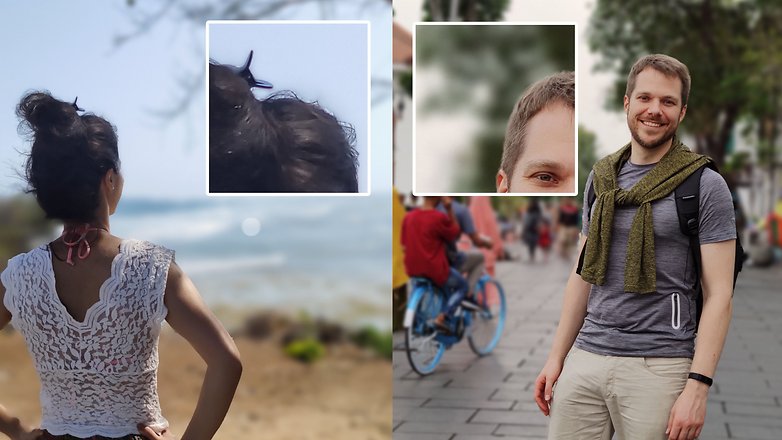
3,7x Telephoto zoom
The next step is the fivefold zoom and its image sensor with 8 megapixels and the 1/4.4-inch format. Xiaomi even worsens these already unfavorable conditions with a trick: the lens in front of the mini chip only offers a 3.7x zoom. To get to "5x", a 5-megapixel section of the sensor center is interpolated back to 8 megapixels.
With perfect lighting conditions and reduced viewing, the results are already halfway usable. In everything that is not directly illuminated by the sun, however, details are mixed up beyond recognition. As with the "2x" sensor, there are always acceptable image areas with directly adjacent image areas with completely muddy detail reproduction. To make matters worse, the autofocus is often catastrophic.

Another problem of the 5x telephoto zoom camera are the often very strong chromatic aberrations. These are violet and green fringes that usually appear at high-contrast transitions in the image.
Ultra-wide angle
I think the ultrawide-angle module is great because of its principle. No matter if landscape, interiors or even portraits: The large image angle is practical and has already given me many interesting pictures - and by the way also great in videos.
When it comes to image quality, the 20-megapixel module is roughly on a par with the 2x telephoto-sensor: The color rendition is successful and the detail rendition is basically good. Unfortunately, the ultrawide-angle photos also struggle with the partially muddy textures, as described above for the 2x telephoto zoom module. In weaker lighting conditions, the difference in size from the main sensor is finally noticeable - the image quality then drops significantly, especially in a direct comparison.
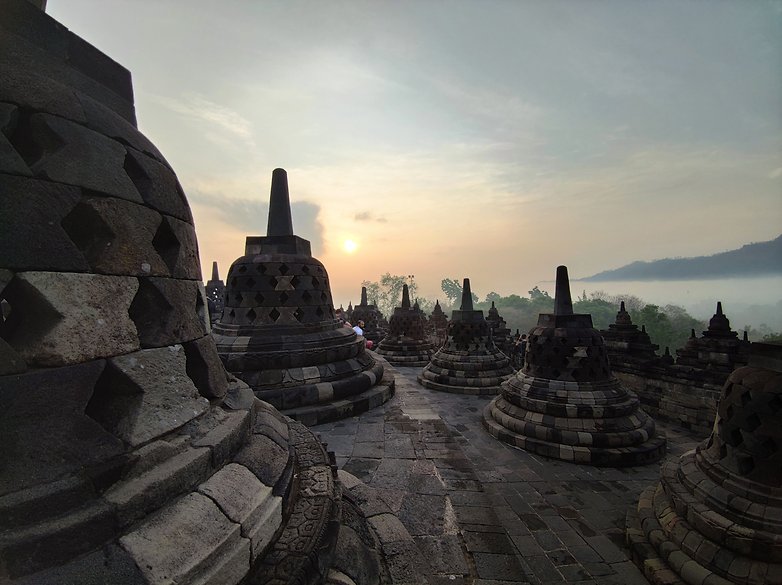
Should the ultrawide-angle not be enough, the Mi Note 10 has an excellent panorama mode that shoots very high resolution and beautiful photos. It's worth trying.

Macro camera
Last but not least there is the macro module, which I personally consider superfluous. If you zoom into the image of the main camera digitally, you will get just as many, if not more details. The only advantage of the 2-megapixel macro shots is that you get a preview of the final image right away and don't have to enlarge it later. But this could also be solved by software.
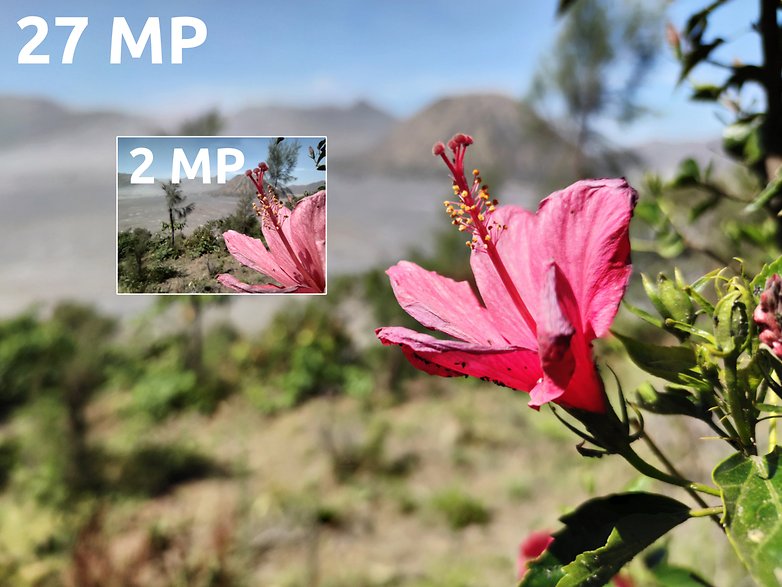
Camera performance
Unfortunately, the main camera, in particular, shows clear deficits in terms of performance. Even in 27-megapixel mode, with HDR mode activated, there is a forced pause of about two seconds between each image. In addition, there is a significant release delay. Capturing exactly the right moment in an action scene is really problematic - with or without HDR mode. Here, one should definitely use the continuous shooting mode that shovels about ten frames per second onto the internal storage. The resolution here is 27 megapixels, but the compression is significantly higher, which reduces the file size.

Photographing at full resolution is even more difficult, but at least the processing time has been halved with a recent update. Last but not least, the camera app itself didn't always react stably. Sometimes even a restart was necessary to get it running again.
The selfie camera
On paper, the selfie camera has the right prerequisites - and has also done really well in practical use under various conditions.

The selfie camera
- Samsung S5KGD1
- 32 megapixels, aperture F2.0
- 0.8-micron pixel pitch
- No optical image stabilizer
- 1/2.8-inch sensor
Under good lighting conditions, photos look crisp and have natural and vibrant colors. If you switch to the selfie camera in Portrait mode, you can also use Bokeh effects here. Even in mixed light conditions, Xiaomi still produces beautiful images from the sensor that shines with largely natural colors and good details.

Video quality
The camera salad mentioned at the beginning shows its problems also in video mode. It is not possible to change the camera while video recording is in progress. So if you start recording in ultrawide-angle mode, you will only zoom around digitally in the image of that camera. If you start recording in telephoto mode, you can't zoom out to wide-angle. Starting from the main camera, however, zooming in is no problem thanks to the pixel mass and sensor size - but you should consider this before starting the recording.
Apart from that, the video mode shows a similar picture to that of taking pictures: the main camera delivers great results, wide-angle and 2x zoom are good, and the 3.7x/5x telephoto module isn't really convincing. Another pleasing feature is the good video stabilization, which only brings unpleasant blurring artifacts to the images in poor lighting conditions.
I edited a video for you with some scenes from Indonesia. There are consciously neither effects nor music put over the video, in order to give you as unadulterated a picture of the video quality as possible.
Battery life
Even if we normally cover this in the general test, it still deserves a mention here: the battery life is catastrophic if the camera is used diligently. With 5,260 mAh, the really powerful battery can't even survive an entire day's holiday if the cameras are used regularly.
The bottom line
Back to the striking opening question: can the smartphone, represented here by the Xiaomi Mi Note 10, replace a DSLR? I can feel the outcry in the comments, but still! More than any other image sensor recently installed in smartphones, the 108-megapixel has what it takes, at least for the average user.
If I now imagine a Xiaomi Mi Note 10 without the mixed performance, without the occasional full misses and for it with a tidy camera setup and some fine-tuning of the algorithms, then the answer for me is: yes, I probably wouldn't miss my DSLR anymore on such a journey.
Until we get the image sensor of tomorrow also with the smartphone and the software of tomorrow, we have to wait, well, probably until "tomorrow". In addition to the aforementioned Samsung Galaxy S11, the Xiaomi Mi Mix Alpha is a hot (and also likely expensive) candidate. The sensor definitely has the potential to turn the smartphone camera world upside down in 2020.
Finally, I'd like to mention once again: I shot most of the photos and videos before the two most recent firmware updates. However, I was able to observe all the problems mentioned in the test - unless explicitly mentioned - in one form or another even after the update. In the very poor changelogs, there was nothing to read from the camera in both updates, even if at least the performance in 108MP mode has noticeably improved.
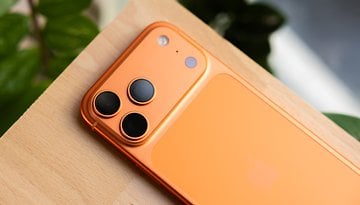
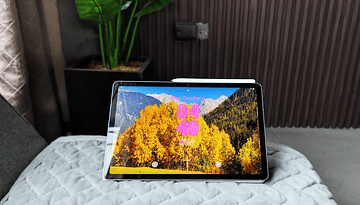

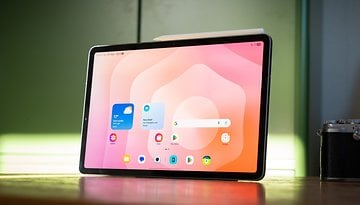


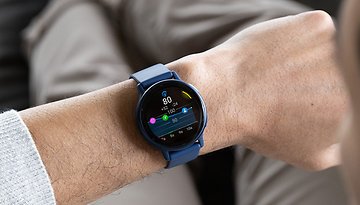

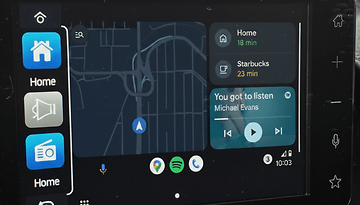
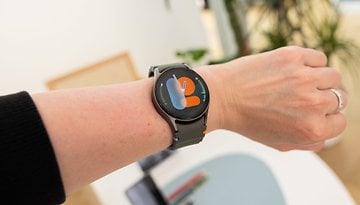

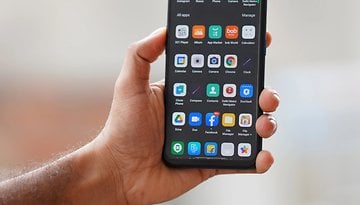


Why do pictures and videos taken by the front camera look brighter than those taken on the back camera?
I tried switching to recording videos with the back camera for better quality but the video always comes out looking dark and awful.
Is this a Xiaomi MIUI thing?
There's something I don't get about you people....you're talking about a phone here right?What's this harping on and on about the camera this and camera that about?WTF do I care if the camera can photograph my ass in the dark?It is a PHONE!Why dontcha tell us something about sound quality?Connection?You know like something important...to do with communication?I live in Britain,my family lives on the continent.So I would be interested about soundquality and stuff to do with connection etc...you wanna photgraph something get a frigging camera for chrissakes.Bande de cons...
The good news for you Dada is that the all those connectivity benchmarks we used to run in the 90s are going to come back with the 5G rollout : )
Id like to see a review of the clip on camera extensions for smartphones. Which is best, tricks for usage and so on.
Why dontcha get a fucking camera then?
Xiaomi Redmi Note 8 camera review
When did phone forums become camera forums? The camera has got to be the very LEAST important thing on any smart PHONE for me and many others. If you cannot communicate with your smart phone then nothing else matters!
For me (and many others), cameras are the only real distinguishing factor between phones, as they've gotten to a point where everything else is at least decent. Communication already worked on the old Nokias.
Wow,finally an intelligent comment on here.Exactly what I think man.This is so stupid.They go on and on and on about tech stuff to do with the bloody camera I for one am not interested in at all and nothing about things which matter when choosing a cell phone...connection,and quality of sound when talking to my relatives who all live in an other country.That's something I would be interested in.Something important to me and I suspect to lots of others too.But...those chinless,assless,brainless "oh look at us we're so smart" tech savvy wankers only repeat what the first guy said about a given phone and think they're really smart blubbering tech shit they don't even fully comprehend on these sites.Like I said chinless and assless...
Any smartphone will satisfy your user needs for good coverage and making a phone call between the UK and abroad. If this is your only requirement, my advice would be to buy the cheapest you can find.
You are Right...
-
Admin
Dec 14, 2019 Link to commentXiaomi always gives excellent hardware for the price but a real camera is another thing
From the point of view of WikiMob Xiaomi Mi Note 10 already has the best back camera in the price category for it, but we blame it for using this processor, which causes slow process of image processing, and also the battery is large but does not give performance as much as its size
I thought this is about cellphones?All I read is about camera this,camera that...is this a joke?Why not tell us something about connection stability?Sound quality?Things which are IMPORTANT.If I want to photograph something I'll get a fucking camera...
This is the dedicated camera review. The clue is in the headline.